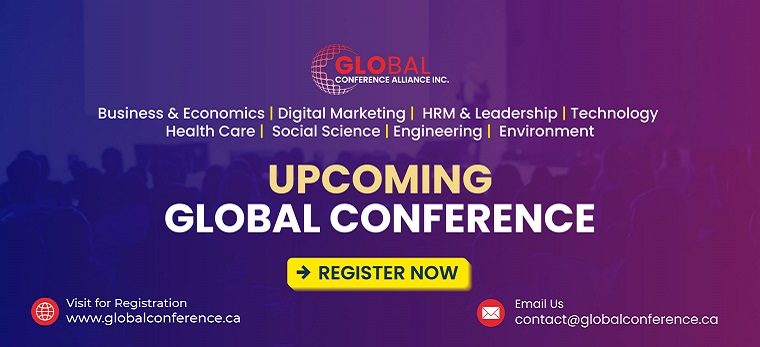Research publications play a vital role in academia, showcasing the latest findings and contributing to advancing knowledge. Conference and journal papers are essential among the various forms of scholarly work. While journal papers are widely recognized for their impact factor, the question arises: Does conference paper have an impact factor?
Conference papers typically do not have an Impact Factor as they are not usually indexed like journal papers.
In this blog, we will explore the relationship between conference papers and impact factors, shedding light on their influence and significance. By examining conference papers’ characteristics, structure, and review processes, we can gain insights into their potential impact on the academic community.
Join us as we dig deeper into this intriguing topic and uncover the relevance of conference papers in the scholarly world.
Understanding Journal Papers And Conference Papers
Journal and conference papers are both forms of academic publication but differ in several aspects. Journal papers are typically more comprehensive, peer-reviewed, and have a longer publication timeline. They are often considered more prestigious and have higher impact factors.
On the other hand, conference papers are shorter, focus on specific research topics, and are presented at international educational conferences for immediate dissemination. They undergo a shorter review process and offer opportunities for networking and collaboration. While both contribute to academic knowledge, choosing journal and conference papers depends on the researcher’s goals, timeline, and target audience.
Does Conference Paper Have an Impact Factor?
Conference papers do not typically have an Impact Factor. Impact Factor is a metric that measures the average number of citations received by articles published in a specific journal. It is primarily associated with journal papers, which undergo severe peer review and are indexed in scholarly databases. Conference papers, on the other hand, are often not indexed in the same way and may not receive the same level of citation tracking.

However, conference papers still play a valuable role in disseminating research, facilitating knowledge exchange, and fostering collaboration within specific academic communities.
Their impact is often measured through other means, such as conference attendance, networking opportunities, and subsequent publication or citation of extended versions of the work in journals.
What Factors Influence The Length Of A Conference Paper?
When crafting a conference paper, several factors come into play to determine its optimal length. By understanding these factors, you can ensure that your paper aligns with the requirements, effectively communicates your research, and fits within the allocated presentation time.
Acceptable Length Of A Conference Paper
The acceptable length of a conference paper varies depending on several factors. Conference organizers often provide guidelines specifying the desired length, expressed as a word count, page limit, or character limit. Adhering to these guidelines is crucial to ensure the paper meets the submission requirements.
Influence Of Conference Guidelines
Conference guidelines play a significant role in determining the length of a conference paper. These guidelines are designed to maintain consistency and facilitate effective presentations. They provide authors with clear expectations and help ensure that all accepted papers are accommodated within the conference schedule.
Consideration Of Presentation Time Limits
Presentation time limits at conferences also influence the length of conference papers. Conferences typically allocate specific time slots for each presentation, ranging from a few minutes to half an hour or more. Authors must consider the allocated time and ensure that their paper length allows them to present their research within that timeframe effectively.
Content And Research Complexity
The complexity of the research topic and the required analysis level impact the length of a conference paper. In-depth studies with complex methodologies and extensive data analysis require more space to present and explain the research adequately. Conversely, simpler research studies with straightforward findings may have shorter paper lengths.
Submission And Review Process Of A Conference Paper
The submission process for a conference paper typically involves several steps:
Call For Papers
Monitor conference announcements or websites for a “Call for Papers” that outlines the conference theme, submission guidelines, and important dates.
Abstract Submission
Prepare an abstract summarizing your research objectives, methodology, and key findings. Follow the guidelines provided by the conference and submit your abstract by the specified deadline.
Full Paper Submission
You will be invited to submit a full paper if your abstract is accepted. Prepare the complete manuscript according to the conference guidelines, including introduction, methodology, results, discussion, and conclusion.
Peer Review
Once you submit your conference paper, it undergoes a peer review process. Experts in the field assess your research’s quality, relevance, and validity. They provide feedback, suggestions for improvement, or a decision of acceptance, rejection, or revision.
Revisions And Final Submission
If your paper requires revisions, carefully address the reviewers’ comments and suggestions. Revise your paper accordingly and submit the final version by the specified deadline.
The Importance Of Presenting Papers In Conferences
Presenting good papers at conferences holds significant importance in the academic and research community. Here are some key reasons why presenting papers at conferences is essential:
Knowledge Dissemination
Conferences provide a platform to share your research findings and insights with a wider audience. Presenting your paper allows you to communicate your work, contribute to the body of knowledge in your field, and promote the advancement of research.
Networking Opportunities
Conferences bring together researchers, scholars, and professionals from various institutions and disciplines. Presenting your paper allows you to connect with experts in your field, establish new collaborations, and exchange ideas. Networking at conferences can lead to valuable relationships, future research collaborations, and career opportunities.
Feedback And Constructive Criticism
Presenting your paper allows you to receive feedback and constructive criticism from the audience and fellow researchers. Their insights can help you improve your research, identify new perspectives, and refine your ideas. Engaging in discussions during conference sessions can broaden your understanding of the topic and stimulate further exploration.
Recognition And Visibility
Presenting at conferences increases the visibility of your work within the academic community. It enables you to showcase your research to peers, potential collaborators, and potential employers. Presenting papers at well-established conferences can enhance your professional reputation and open doors for future research opportunities.
Professional Development
Presenting papers at conferences enhances your presentation and communication skills. It provides valuable experience in conveying complex ideas concisely, responding to questions, and delivering impactful presentations. These skills are transferable and can benefit you in various professional settings.
Keeping Up With The Latest Research
Conferences offer a platform to learn about your field’s latest advancements, trends, and breakthroughs. Attending presentations by other researchers exposes you to cutting-edge research, diverse perspectives, and emerging methodologies. It keeps you informed and helps you stay abreast of the latest developments in your area of interest.
Polishing Conference Paper Effectively To Ensure Its Quality And Professionalism
Preparing a conference paper involves polishing it to meet the required standards. Here are some essential steps for polishing your conference paper:

Preparing A Camera-Ready Version
Once your paper is accepted, you may be required to submit a camera-ready version. This final version should adhere to the conference’s formatting guidelines, including font style and size, margins, and page layout. Pay attention to details such as headings, subheadings, and section numbering to ensure consistency and clarity.
Formatting And Referencing
Follow the conference’s specified formatting style (e.g., APA, MLA) for citations, references, and bibliography. Ensure all sources are properly cited within the text, and the references are accurate and complete. Double-check the formatting of in-text citations, footnotes, and endnotes to maintain consistency throughout the paper.
Proofreading For Clarity And Correctness
Proofread your paper meticulously to identify and correct any grammatical errors, spelling mistakes, or typos. Ensure that sentences are clear, concise, and coherent. Check the flow of ideas, transitions between paragraphs, and overall readability of the paper.
Incorporating Acknowledgments
Acknowledgments allow you to express gratitude to individuals or institutions contributing to your research or paper. Include acknowledgments at the end of your paper, following the conference’s guidelines. Be sure to acknowledge funding sources, research collaborators, advisors, or anyone who provided significant support or assistance.
Final Review And Revisions
Before submitting the camera-ready version, review the entire paper carefully to ensure all changes and edits have been incorporated correctly. Check the paper’s formatting, referencing, and overall presentation to ensure it meets the conference’s requirements.
What Are Some Additional Considerations When It Comes To Conference Papers?
Regarding conference papers, there are several important additional considerations to remember. They are discussed below:
Adding Conference Papers To Google Scholar And Other Databases
To increase the visibility and accessibility of your conference papers, consider adding them to academic databases like Google Scholar. This allows other researchers and scholars to find and cite your work easily. Check the guidelines provided by the database to ensure proper indexing and inclusion of your papers.
Downgrading Or Withdrawing A Conference Paper
In certain situations, consider downgrading or withdrawing a conference paper. This could be due to unforeseen circumstances, new developments in your research, or ethical concerns.
Before making such a decision, carefully review the conference’s downgrading or withdrawal procedures guidelines. Communicate with the conference organizers, explain your reasons, and follow the necessary steps to ensure a smooth transition or withdrawal.
Incorporating Conference Papers In Linkedin Profiles
Including conference papers in your LinkedIn profile can enhance your professional visibility and highlight your research accomplishments. Create a dedicated section to showcase the conference papers you have presented or published.
Provide summaries of the papers, mention the conference names, and include any notable awards or recognition received. This demonstrates your active involvement in the academic community and can attract potential collaborators, employers, or colleagues who share similar research interests.
Conclusion
Conference papers play a significant role in the academic landscape. They provide a valuable avenue for researchers to disseminate their findings, engage in scholarly discussions, and expand their professional networks. While conference papers may not have an Impact Factor in the traditional sense, they contribute to the overall impact and reputation of researchers and their work.
The impact of conference papers is measured by citations, collaborations, and the recognition received within the academic community. Therefore, researchers need to consider both journal papers and conference papers as valuable forms of publication. So, the next time you ask, “Does conference paper have an impact factor?” remember that conference papers may not have a numerical Impact Factor. Still, they undoubtedly impact knowledge dissemination, networking, and advancing academic careers.






